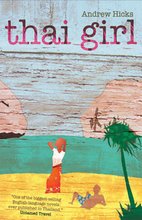
That very independent London newspaper, ‘The Independent’, recently ran an article stating that there’s now one rat for every person in Britain… that’s a 39% increase in the past seven years.
Personally I’m quite fond of them, so I’m thinking of flying back to England to claim my rat. (A Welsh or Scottish rat would be fine, as I’m not fussy.) Though I’m worried... do they really mean a 39% increase in rats or persons, because surely they don’t do rat censuses. How can they be sure that one to one is the correct British rat ratio?
It bothers me anyway the bad press rats always get. Cutesey little harvest mice on birthday cards we love to bits, but rats! Is more rats necessarily bad rats or are we all guilty of ratial prejudice? Given the similarity of rats to mice, hating them is hardly rational.
So are the British now wanting to get rid of their rats? It could be a bit difficult. Other than paying a pied piper, they’d do well to realize that if you can’t beat them, you’d better eat them.
I first ate rat for Christmas dinner on the banks of the Niger in the south of Nigeria far too many years ago. The rat was peppered and very spicey and by the light of a guttering oil lamp hung low over the table, boy, did we sweat.
In that part of the world, rats are as big as rabbits and are known as grass cutters. At our compound in Zaria eight hundred miles further north, the dogs used to catch grass cutters and bring them home for us. Our Christian cook was always grateful to eat this luxury meat, but Garba our Muslim cook never would because the rats had been contaminated by the dogs which are unclean in Islam. Of course most Europeans wouldn’t eat this fine protein simply because it’s a rat, though there’s a real distinction between the sewer-dwelling scavenging rats of the city and these clean-living rural rats which are thoroughly edible and quite delicious.
Once staying in a village in Laos far up a river and miles from the nearest road, I saw the children out in the rice fields excitedly digging into the low walls that separate the dry rice fields. I asked them what they were digging for. It was rats. Here in our village in Isaan, the quest for food and survival is exactly the same and the kids dig for rats in exactly the same way and hunt them at night with torches.
In our kitchen, we have one of those old-fashioned food cabinets with perforated zinc sides and the other day I was getting my coffee for breakfast and as I put my hand inside I saw spread out beside the bananas a big, fat, dead rat. My gut reaction was not wholly positive and I confess to some repressed feelings of ratism. Somehow this dead rat was a worse shock than the live one I later discovered in a pot under the sink when I went to investigate some scraping sounds. Usually it’s fish or crabs or even a turtle doing the scraping, but this time I was more worried about whether the rat had any water.
Jerry Hopkins, the famous author of a remarkable book called, ‘Extreme Cusine’, who happens to have a home not far from here, comments that the next untapped source of protein that’s available to feed the world is insects. His book is a fascinating survey of all the more unusual foods that are eaten throughout the world, though I’m rapidly discovering that what’s unusual is entirely subjective.
In an earlier blog, I mentioned that when going on holiday we almost missed the last ferry to Koh Chang because Cat spent an hour or two before we left setting up an insect trap for Mama and Nan. Dare I say, when I thought I was going to miss my sixtieth birthday party on the beach, it really bugged me. Anyway, the result is that I now can admire a strange structure behind the house consisting of a bamboo pole with a rusty piece of corrugated sheeting tied to it and a light that glows eerily purple at night. I should be grateful of course as this construct no doubt could be sold for a considerable sum in London as modern sculpture and also because Nan is now able to sell the insects it catches for at least twenty baht a day.
So how does it work? Well, the insects see the purple light and decide reasonably enough to hurl themselves at the sheeting, then fall into a bucket of water and have a swim. Some miss the bucket and land on the earth into which they then burrow for whatever reason. Now, every day, first thing in the cool of the morning there’s a huddle of those near and dear to me sifting through the soil and picking out the insects one by one. Yummee!
Whether you eat insects or not is a matter of culture, though I can vouch for the fact that fried insects can be delicious and are clearly nutritious. What’s delicious and luxurious, however, depends on whether you acquire the taste as you grow up. What, for example, could be more disgusting than Stilton cheese. Swallowing raw oysters is quite revolting, yet eaten with fresh French bread and washed down with a chilled dry white wine, it’s my idea of gustatory heaven.
A week or two back, I was laying a few pieces of turf I’d bought at a garden centre when a neighbour from one of the poorest houses in our soi greeted me from across the fence. She was carrying a long bamboo pole on the end of which was a small net. She was hunting for red ants nests. I’d only spent a hundred baht on the turf but I stopped work and slunk away as I didn’t want her to see my wasteful folly of ‘gardening’. I felt uncomfortable that here she was gathering such awful food for her family when I can waste money on turf and cruise the supermarket with a heavily laden trolley.
High in the trees, the red ants sew the leaves together into a nest, clearly visible from the ground and the eggs inside provide useful sustenance. I’ve eaten them, generally with a few ants mixed in and they’re tasteless but perfectly palatable. Cat says red ants are becoming fewer because of being hunted, which is sad because rather than being a food of poverty, they’re also a food of choice. The folks around here love them and would of course eat them in preference to something very similar we Europeans regard as a delicacy. While they adore red ants' eggs, we go for caviare, because they're what we each are accustomed to liking.
There’s so much to say about gathering food, that it’s a subject I shall return to later on, but I’ll end with a passing thought. Even if there’s a red ant shortage, I wonder what the rat to person ratio is in Thailand. Despite the intensive hunting, are the Thais fortunate enough to have more rats than we do back in Britain?
Personally I’m quite fond of them, so I’m thinking of flying back to England to claim my rat. (A Welsh or Scottish rat would be fine, as I’m not fussy.) Though I’m worried... do they really mean a 39% increase in rats or persons, because surely they don’t do rat censuses. How can they be sure that one to one is the correct British rat ratio?
It bothers me anyway the bad press rats always get. Cutesey little harvest mice on birthday cards we love to bits, but rats! Is more rats necessarily bad rats or are we all guilty of ratial prejudice? Given the similarity of rats to mice, hating them is hardly rational.
So are the British now wanting to get rid of their rats? It could be a bit difficult. Other than paying a pied piper, they’d do well to realize that if you can’t beat them, you’d better eat them.
I first ate rat for Christmas dinner on the banks of the Niger in the south of Nigeria far too many years ago. The rat was peppered and very spicey and by the light of a guttering oil lamp hung low over the table, boy, did we sweat.
In that part of the world, rats are as big as rabbits and are known as grass cutters. At our compound in Zaria eight hundred miles further north, the dogs used to catch grass cutters and bring them home for us. Our Christian cook was always grateful to eat this luxury meat, but Garba our Muslim cook never would because the rats had been contaminated by the dogs which are unclean in Islam. Of course most Europeans wouldn’t eat this fine protein simply because it’s a rat, though there’s a real distinction between the sewer-dwelling scavenging rats of the city and these clean-living rural rats which are thoroughly edible and quite delicious.
Once staying in a village in Laos far up a river and miles from the nearest road, I saw the children out in the rice fields excitedly digging into the low walls that separate the dry rice fields. I asked them what they were digging for. It was rats. Here in our village in Isaan, the quest for food and survival is exactly the same and the kids dig for rats in exactly the same way and hunt them at night with torches.
In our kitchen, we have one of those old-fashioned food cabinets with perforated zinc sides and the other day I was getting my coffee for breakfast and as I put my hand inside I saw spread out beside the bananas a big, fat, dead rat. My gut reaction was not wholly positive and I confess to some repressed feelings of ratism. Somehow this dead rat was a worse shock than the live one I later discovered in a pot under the sink when I went to investigate some scraping sounds. Usually it’s fish or crabs or even a turtle doing the scraping, but this time I was more worried about whether the rat had any water.
Jerry Hopkins, the famous author of a remarkable book called, ‘Extreme Cusine’, who happens to have a home not far from here, comments that the next untapped source of protein that’s available to feed the world is insects. His book is a fascinating survey of all the more unusual foods that are eaten throughout the world, though I’m rapidly discovering that what’s unusual is entirely subjective.
In an earlier blog, I mentioned that when going on holiday we almost missed the last ferry to Koh Chang because Cat spent an hour or two before we left setting up an insect trap for Mama and Nan. Dare I say, when I thought I was going to miss my sixtieth birthday party on the beach, it really bugged me. Anyway, the result is that I now can admire a strange structure behind the house consisting of a bamboo pole with a rusty piece of corrugated sheeting tied to it and a light that glows eerily purple at night. I should be grateful of course as this construct no doubt could be sold for a considerable sum in London as modern sculpture and also because Nan is now able to sell the insects it catches for at least twenty baht a day.
So how does it work? Well, the insects see the purple light and decide reasonably enough to hurl themselves at the sheeting, then fall into a bucket of water and have a swim. Some miss the bucket and land on the earth into which they then burrow for whatever reason. Now, every day, first thing in the cool of the morning there’s a huddle of those near and dear to me sifting through the soil and picking out the insects one by one. Yummee!
Whether you eat insects or not is a matter of culture, though I can vouch for the fact that fried insects can be delicious and are clearly nutritious. What’s delicious and luxurious, however, depends on whether you acquire the taste as you grow up. What, for example, could be more disgusting than Stilton cheese. Swallowing raw oysters is quite revolting, yet eaten with fresh French bread and washed down with a chilled dry white wine, it’s my idea of gustatory heaven.
A week or two back, I was laying a few pieces of turf I’d bought at a garden centre when a neighbour from one of the poorest houses in our soi greeted me from across the fence. She was carrying a long bamboo pole on the end of which was a small net. She was hunting for red ants nests. I’d only spent a hundred baht on the turf but I stopped work and slunk away as I didn’t want her to see my wasteful folly of ‘gardening’. I felt uncomfortable that here she was gathering such awful food for her family when I can waste money on turf and cruise the supermarket with a heavily laden trolley.
High in the trees, the red ants sew the leaves together into a nest, clearly visible from the ground and the eggs inside provide useful sustenance. I’ve eaten them, generally with a few ants mixed in and they’re tasteless but perfectly palatable. Cat says red ants are becoming fewer because of being hunted, which is sad because rather than being a food of poverty, they’re also a food of choice. The folks around here love them and would of course eat them in preference to something very similar we Europeans regard as a delicacy. While they adore red ants' eggs, we go for caviare, because they're what we each are accustomed to liking.
There’s so much to say about gathering food, that it’s a subject I shall return to later on, but I’ll end with a passing thought. Even if there’s a red ant shortage, I wonder what the rat to person ratio is in Thailand. Despite the intensive hunting, are the Thais fortunate enough to have more rats than we do back in Britain?





No comments:
Post a Comment